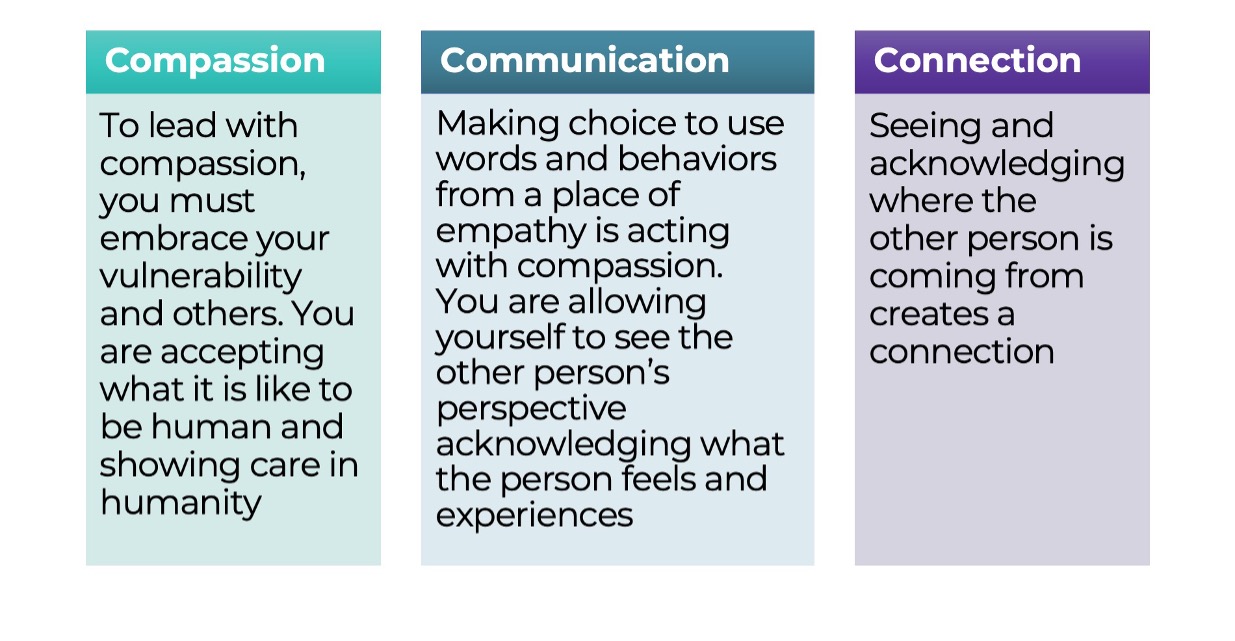
Embracing Vulnerability in Leadership Part II
Guest blogger: Jennifer Roe
This is part two of the three-part series. Part one can be found here.
Implementing ACT in the Workplace
We can see the benefits of vulnerability, but how do we introduce and utilize it in behavior-analytic and other work environments?
Brenda Terzich-Garland believes one answer lies in a kind of merger between OBM and ACT, or Acceptance and Commitment Therapy (Terzich-Garland, 2022).
What is ACT?
ACT is a therapeutic approach developed by Steven C. Hayes in the 1980s. As described by Dindo et al. (2017) in the journal Neurotherapeutics,
ACT rests on the fundamental premise that pain, grief, disappointment, illness, and anxiety are inevitable features of human life, with the therapeutic goal of helping individuals productively adapt to these types of challenges by developing greater psychological flexibility rather than engaging in counterproductive attempts to eliminate or suppress undesirable experiences. This is achieved through committed pursuit of valued life areas and directions, even in the face of the natural desire to escape or avoid painful and troubling experiences, emotions, and thoughts.
If we suppress feelings in work settings they can re-emerge strongly and interfere with our relationships and decision-making (Omadeke, 2022). But if we use ACT interventions to teach people how to contextualize, respond to, and relate to suffering differently, we can prevent the development and maintenance of psychological distress, behavioral ineffectiveness, and reduced quality of life (Hayes et al., 2012).
ACT teaches us to use our core values to anchor and guide us as we navigate uncomfortable feelings. “Values can either connect you to or disconnect you from your employees,” says Terzich-Garland, emphasizing that companies and leaders should act in accordance with their stated values. “If you as a leader have not developed your values, that can create a huge disconnection between you and the employees. When values do not align, a dualist mentality develops. The employee must decide, Do I do what I’m told to do, or do what I value?” She advises that if this duality exists in your workplace, you must bring people together to discuss and resolve the misalignment.
Implementing ACT in the workplace, says Terzich-Garland, “can take a really long time. We first spent time identifying [...] areas of committed values and action. It was something that was very eye-opening to my staff. When we look at values as a way to navigate, we’re able to deal with the thoughts and feelings that staff have that they want to suppress or get rid of.”
Terzich-Garland adds, “Acceptance allows you to develop self-compassion, which allows you to feel greater compassion for others. Self-compassion increases the likelihood that your and your staff’s actions will remain consistent with values.”
ACT in Five Steps
- Identify your values
- Accept the experience of your thoughts, feelings, and other private psychological sensations
- Observe these and stay in the present
- Using your values as your guide, navigate through the situation by choosing actions based on those values
- Engage in your chosen committed actions
Terzich-Garland observes, “It’s one thing to identify values; another to define actionable behaviors to live them out.” She suggests complementing your mission statement with a description of “mission delivery”—specific behaviors that demonstrate your values in action.
“If you look at the [ABA] workplace, change isn’t as easy to accept as it is to teach.”
Brenda Terzich-Garland, Embracing Vulnerability In Leadership: Lead To Empower In Supervision With Act
The Three Cs of Empathy
So how do we lead, yet listen? How do we point the way, yet read the room and stay connected? Terzich-Garland believes another answer lies in her variation on the “Three Cs of Empathy,” a cascading sequence of compassion, communication, and connection.
You want to come from a place of compassion,” says Terzich-Garland. “That means that you see the other person’s humanity. By acknowledging that they’re human first, before they’re an employee, you can then embrace your own vulnerability as well as theirs. You then want to communicate that compassion by choosing words and actions that demonstrate empathy. Demonstrate that you see and validate their perspective.
Communicating from a place of compassion leads to connection. “Everybody knows what a connection feels like,” says Terzich-Garland, “because you certainly know what it feels like when there’s a disconnection.” She suggests implementing role-play if you’re uncomfortable with the process and practice of linking the three “Cs” together to embrace vulnerability and show empathy:

The ABCs of Resolution and Transformation
To unify these concepts, Terzich-Garland draws on the work of Brené Brown and from behavior analysis to devise a third tool she calls, “The ABCs of Resolution and Transformation.”

Terzich-Garland’s “ABCs” help leaders change how employees relate to what’s required of them. They are useful when resolving conflict, giving feedback, or mentoring or training others who are struggling.
“Acceptance” comes directly from ACT and points to staying present with and accepting your thoughts and feelings.
“Boundaries” represent an opportunity to describe what’s unacceptable without making someone feel judged. The technique is to present what is okay side-by-side with what isn’t. Terzich-Garland offers a scenario: “I want to express to you that you can be frustrated, and you can share what you’re thinking, but pounding the table and yelling is not okay if you’re giving feedback to a parent.”
She continues, “By setting those boundaries we make space for the person to choose a committed action that will resolve the conflict. When we are able to make choices that align with our values, we are able to transform the interaction because we maintain the connection by accepting the vulnerability that is happening with each other.”
Adapted from EMBRACING VULNERABILITY IN LEADERSHIP: LEAD TO EMPOWER IN SUPERVISION WITH ACT, a webinar by Brenda J. Terzich-Garland, MA, BCBA.



